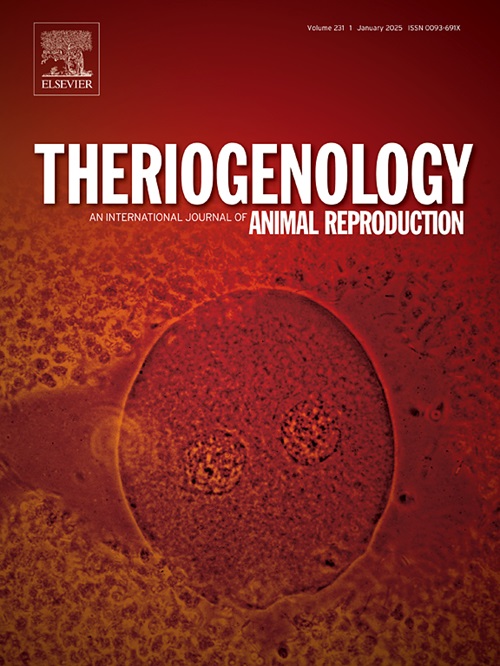蓝鲶精子脂肪酸组成作为品质和低温耐受性指标的研究
IF 2.4
2区 农林科学
Q3 REPRODUCTIVE BIOLOGY
引用次数: 0
摘要
对于商业上重要的蓝鲶(Ictalurus furcatus)来说,目前还缺乏可用于预测其新鲜和冷冻解冻精子质量的生物标志物。精子膜由各种脂肪酸(FAs)组成,这些脂肪酸与其他动物和鱼类分类群的繁殖成功有关,使其成为潜在的生物标志物。本研究的目的是(i)比较新鲜和冷冻保存的男性组的精子FA百分比;(ii)使用新鲜和冷冻保存的雄性精子的精子运动学来创建“好”(即快速游动的精子运动学)和“坏”(即缓慢游动的精子运动学)质量组,然后比较各组的FA百分比,以确定新鲜和冷冻解冻精子质量和低温耐受性的生理生物标志物。我们发现新鲜和冷冻保存的精子之间存在显著差异,其中新鲜精子的n-3:n-6和EPA:ARA以及n-3 PUFAs和MUFAs的比例显著高于冷冻保存的精子,而冷冻保存的精子具有更高的饱和脂肪酸浓度。来自优良雄鼠和劣种雄鼠的冷冻保存精子也存在差异,如优良雄鼠的饱和脂肪酸浓度明显较高,劣种雄鼠的MUFAs、n-6 PUFAs、n-3 PUFAs和总PUFAs浓度明显较高。最后,新鲜精子中低水平的MUFAs和n-6 PUFAs导致解冻后精子运动学更高。这些知识现在可以用来创建精子质量的其他生物标志物,并制定鲶鱼饲料的FA概况,以提高精子质量,从而提高它们处理低温保存过程中应激源的能力。本文章由计算机程序翻译,如有差异,请以英文原文为准。
Sperm fatty acid composition as an indicator of quality and cryotolerance in blue catfish, Ictalurus furcatus
There is a lack of biomarkers that can be used to predict fresh and frozen-thawed sperm quality for the commercially important blue catfish, Ictalurus furcatus. Sperm membranes are composed of various fatty acids (FAs) that have been linked to reproductive success across other animal and fish taxa, making it a potential biomarker. The objectives of this study were to (i) compare sperm FA percentages between fresh and cryopreserved male groups; and (ii) use sperm kinematics of fresh and cryopreserved males to create “good” (i.e. fast swimming sperm kinematics) and “bad” (i.e. slow swimming sperm kinematics) quality groups, then compare FA percentages of the groups to pinpoint physiological biomarkers of fresh and frozen-thawed sperm quality and cryotolerance. We found significant differences between fresh and cryopreserved sperm where fresh sperm had significantly higher ratios of n-3:n-6 and EPA:ARA as well as n-3 PUFAs and MUFAs, while cryopreserved sperm had higher concentrations of saturates. Cryopreserved sperm from good and bad males also had differences, such as a significantly higher concentration of saturates in good males and significantly higher concentrations of MUFAs, n-6 PUFAs, n-3 PUFAs, and total PUFAs in bad males. Lastly, low levels of MUFAs and n-6 PUFAs in fresh sperm resulted in higher post-thaw sperm kinematics. This knowledge can now be used to create additional biomarkers of sperm quality and to formulate the FA profile of catfish diets to improve sperm quality, thereby, improving their ability to handle the stressors of the cryopreservation process.
求助全文
通过发布文献求助,成功后即可免费获取论文全文。
去求助
来源期刊

Theriogenology
农林科学-生殖生物学
CiteScore
5.50
自引率
14.30%
发文量
387
审稿时长
72 days
期刊介绍:
Theriogenology provides an international forum for researchers, clinicians, and industry professionals in animal reproductive biology. This acclaimed journal publishes articles on a wide range of topics in reproductive and developmental biology, of domestic mammal, avian, and aquatic species as well as wild species which are the object of veterinary care in research or conservation programs.
 求助内容:
求助内容: 应助结果提醒方式:
应助结果提醒方式:


